Local councils and institutions are transforming road verges into rivers of owers – and saving money while they do it. But are these sown ‘meadows’ any good for pollinators and other wildlife?

There’s a grim and oft-repeated statistic: since the 1930s, our traditional wildflower meadows have declined by 97 per cent, pushing many grassland species to the verge of extinction. So, while Britain may still be largely green, it is not nearly so pleasant – for wildlife or wildlife lovers.
Meanwhile, the botanical conservation charity Plantlife estimates that the 500,000km of rural road verge in the UK is equivalent in area to roughly half the remaining flower-rich grassland and meadow in the country. It points out that these ubiquitous strips of habitat could be important refuges for a huge range of familiar and rare native plants and the diverse animal communities they support, including beleaguered butterflies and vital pollinators, not to mention bats and birds.
Advocates for nature have long bemoaned a needless obsession with tidiness and clumsy management of verges by poorly trained contractors. It is perhaps understandable that the interests of wildlife come a poor third to considerations of road safety and budget. Driver sightlines are of paramount importance, and for cash-strapped local authorities lacking in time and expertise, it’s not surprising that maintenance regimes are often far from sensitive, involving regular mowing and dousing with herbicides, in most cases.
But now ecologists have a new concern over verge management – and, at first glance, it seems a surprising one. An explosion of colour along roadsides in several UK cities this summer was replicated in the media, with the riotous displays – often in otherwise unprepossessing locations – described as ‘wildflower meadows’. They were widely celebrated for their powerful visual impact and the resource they provide to pollinating insects.
Diese Geschichte stammt aus der September 2019-Ausgabe von BBC Wildlife.
Starten Sie Ihre 7-tägige kostenlose Testversion von Magzter GOLD, um auf Tausende kuratierte Premium-Storys sowie über 8.000 Zeitschriften und Zeitungen zuzugreifen.
Bereits Abonnent ? Anmelden
Diese Geschichte stammt aus der September 2019-Ausgabe von BBC Wildlife.
Starten Sie Ihre 7-tägige kostenlose Testversion von Magzter GOLD, um auf Tausende kuratierte Premium-Storys sowie über 8.000 Zeitschriften und Zeitungen zuzugreifen.
Bereits Abonnent? Anmelden
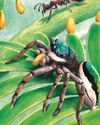
Jump Around - Bagheera Kiplingi - The acrobatic spider with a predilection for veggie food
Spiders eat flies, right? everyone knows that the 45,000 or so spiders in the world are all obligate carnivores, more or less – eating other animals, mainly invertebrates. Nature, however, loves an exception, and one particular spider missed out on that ecological memo. It goes by the wonderful scientific name of Bagheera kiplingi, and its claim to fame is that its diet is – at least mostly – vegetarian.
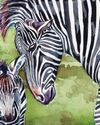
Female of the Species - Zebras - A strong sisterhood is key to staying safe
Zebras are masters of confusion. Their collective noun is ‘a dazzle’, which is fitting since their bodies and behaviour have been surprising scientists for centuries.
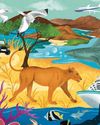
See It, Save It? - Wildlife tourism can be a powerful ally in protecting nature - but it can also harm it. We weigh up the pros and cons.
The sums of wildlife travel aren’t as simple as more tourists equals happier nature. How much did my visit really contribute to the conservation of Lady Liuwa and her habitat – and was that outweighed by carbon emissions from my flights? Did my presence disturb the animals’ natural behaviour more than it reduced the threat of poaching or benefited local communities?The question of whether wildlife travel is, on balance, good for wildlife is a complex one – and there’s no simple answer.

Can Your Really Offset Emissions? - Planning an overseas wildlife-watching trip entails facing some inconvenient truths
Imagine (or maybe you don't need to) that you hanker after the safari trip of a lifetime in sub-Saharan Africa. A 17-day tour beginning at the iconic Victoria Falls, passing through Zimbabwe, Zambia, Malawi and Tanzania, taking in some of the continent’s most wildlife-rich national parks, and ending on the lush island of Zanzibar.

Metamorphosis: a life-changing event
WITH EVOLUTIONARY BIOLOGIST JV CHAMARY
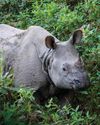
New series for BBC One: Asia
Settle in this autumn for a new natural-history extravaganza on BBC One and iPlayer: the longawaited Asia, presented by Sir David Attenborough.
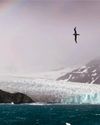
Loss of Antarctic sea ice could impact seabird food supply
Albatrosses and petrels may be forced to fly further to feed
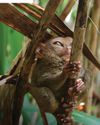
Tarsiers in trouble
Urgent action is needed to ensure survival of the Yoda-like primate

SNAP-CHAT
Chien Lee on shrew loos, rogue drones and being rained out of bed
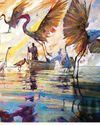
VISIONS OF NATURE
The winners of the Wildlife Artist of the Year competition 2024, from David Shepherd Wildlife Foundation